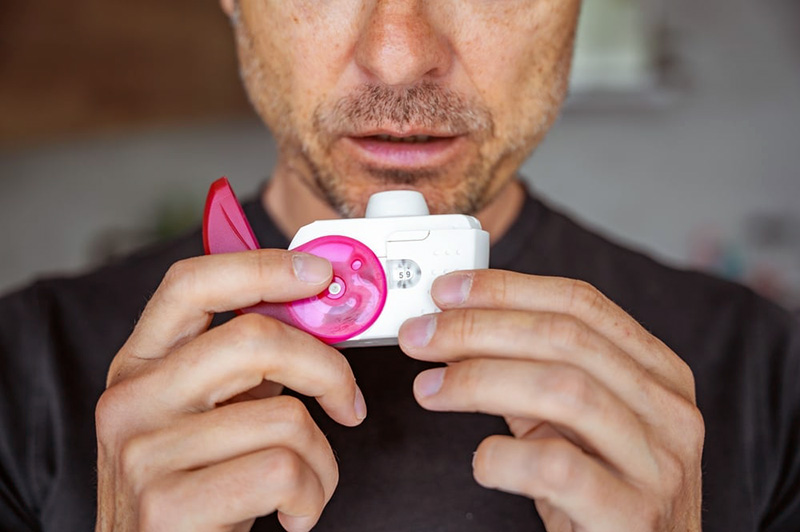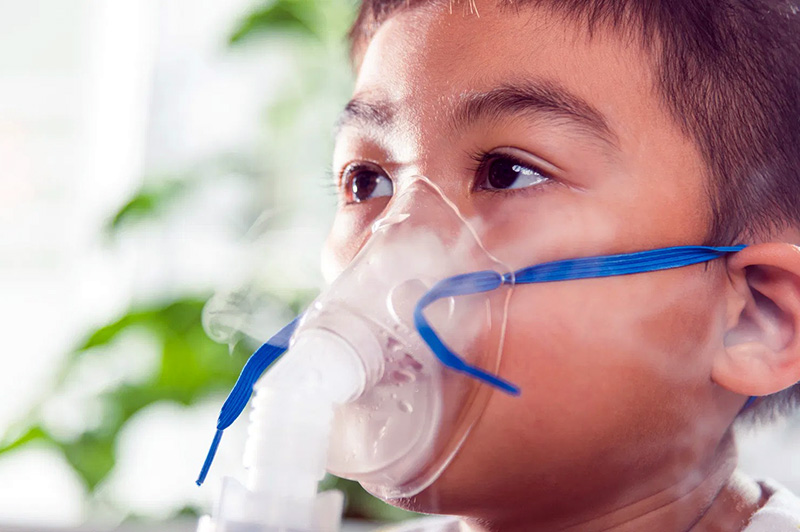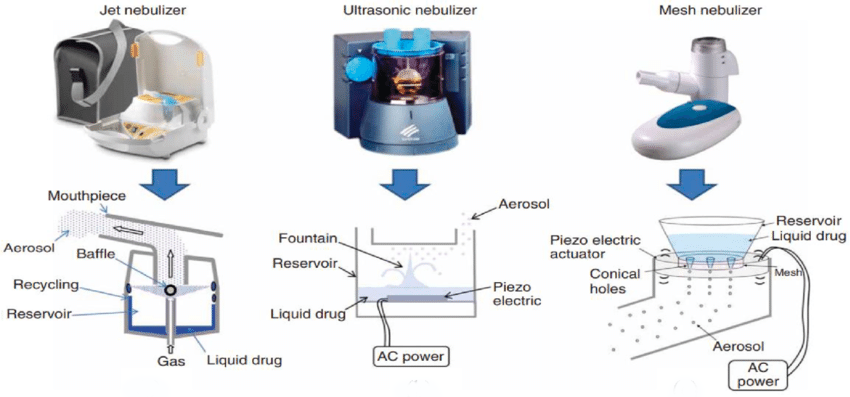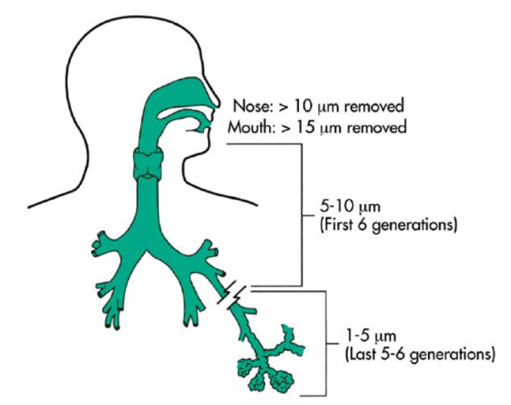How to Treat
What is Respiratory Disease | How it Affects Health | How to Use | Why Pulmogine
How to Treat Respiratory Diseases
Managing respiratory diseases requires a comprehensive approach. Key components include medications such as corticosteroids and bronchodilators, delivered via inhalers or nebulizers, as well as supplemental oxygen for those with low blood oxygen levels. Pulmonary rehabilitation programs enhance lung function through exercise and education. Important lifestyle changes, such as quitting smoking, avoiding pollutants, and maintaining a healthy diet, are also essential.1,2 Additionally, vaccinations for flu and pneumonia help prevent infections.

Credit: ResproPolska, Pixabay
Treatment Methods
Medications
Controller Medications: Taken daily to manage chronic symptoms, including inhaled corticosteroids (ICS), long-acting beta-agonists (LABAs), and long-acting muscarinic antagonists (LAMA).3
Reliever Medications: Provide immediate relief from acute symptoms, including short-acting beta- agonists (SABAs) and short-acting muscarinic antagonist (SAMA).3
Add-on Medications: Used to reduce inflammation, including monoclonal antibodies, PDE4 Inhibitors, and leukotriene receptor antagonists (LTRAs).3
Lifestyle Modifications: Managing triggers, reducing stress, and maintaining a healthy lifestyle are essential for asthma control.4

Credit: Artisteer, iStock
Aerosol Therapy
Aerosol therapy involves delivering medication directly into the lungs through an inhaler or nebulizer, which converts liquid or solid particles into a fine mist that can be easily inhaled. This therapy is commonly used to treat various chronic respiratory diseases.
Three common types of aerosol generators are used for inhaled drug delivery: 5
- Pressurized Metered-Dose Inhaler (pMDI): The pMDI is a small, portable, and self-contained drug delivery device that dispenses multiple metered doses of medication. To reduce medication loss in the oropharynx and assist with hand coordination, holding chambers and spacers are often used in conjunction with the pMDI.
- Dry-Powder Inhaler (DPI): The DPI is an aerosol device that delivers medication in powdered form, typically with a breath-actuated dosing system.
- Small-Volume Nebulizer (SVN): The SVN is an aerosol generator that converts liquid drug solutions or suspensions into aerosol and is powered by compressed air, oxygen, a compressor, or an electrically powered device.

Pressurized Metered-Dose Inhaler

Dry-Powder Inhaler
Credit: Shutterstock

Small-Volume Nebulizer
Small-Volume Nebulizer
Small-volume nebulizers (SVNs) are ideal for patients with coordination challenges, such as children or the elderly, as they deliver a continuous mist without requiring precise inhalation timing. They are designed to deliver a wide range of medications that may not be suitable for other inhalers.5 SVNs are particularly effective for managing conditions like asthma, COPD exacerbations, and cystic fibrosis by delivering higher doses more efficiently. 6,7
There are three main types of SVNs:
- Jet Nebulizer: Uses compressed air to turn liquid medication into a mist for inhalation, treating respiratory conditions.
- Ultrasonic Nebulizer: Uses sound waves to create a mist for inhalation, offering quieter and faster treatment than jet nebulizers.
- Mesh Nebulizer: Uses a vibrating mesh to create a fine mist for efficient, portable, and quiet inhalation.

Credit: Image retrieved from Novel applications of ultrasonic atomization in the manufacturing of fine chemicals, pharmaceuticals, and medical devices.
Mesh Nebulizers

Credit: A Guide to Aerosol Delivery Devices for Respiratory Therapists
Jet and ultrasonic nebulizers are commonly used in hospitals. In addition, the design and compatibility of mesh nebulizers make them ideal for home use. Mesh nebulizers can produce a consistent fine particle dose (FPD) and fine particle fraction (FPF), allowing aerosol particles to reach the lung periphery. Only particles smaller than 5 μm can effectively deposit in the lung periphery, and mesh nebulizers are highly efficient at creating a fine mist that penetrates deeper into the lungs.5
Mesh nebulizers are well-suited for home use due to the following benefits:7
Mesh Nebulizers
- Efficient Medication Delivery
- Mesh nebulizers utilize a vibrating mesh with thousands of tiny holes to generate consistent, fine aerosol particles, ensuring more efficient and accurate medication delivery to the lung periphery.
- Mesh nebulizers utilize a vibrating mesh with thousands of tiny holes to generate consistent, fine aerosol particles, ensuring more efficient and accurate medication delivery to the lung periphery.
- Portability and Compact Design
- Mesh nebulizers are lightweight, compact, and battery-operated, making them ideal for home use and on-the-go.
- Quiet Operation
- Mesh nebulizers operate almost silently, particularly when used during the night or in quiet settings, without disturbing children.
- Minimal Medication Wastage
- Mesh nebulizers tend to have lower residual volume (the amount of medication left in the nebulizer after treatment), which reduces wastage and ensures that more of the medication is delivered.
- Greatest Versatility
- Mesh nebulizers can aerosolize a wide range of medications, including solutions, suspensions, biologics, and high-viscosity drugs, making them versatile for home use where various medications may be required.
- Faster Treatment Time
- Mesh nebulizers generally provide a higher output rate that can efficiently shorten treatment durations for more convenience.
How to choose a nebulizer that is right for you:
- Compatibility with various medications
- Multiple dose convenience
- Consistent and stable particle size distribution
- Low residue of medication
- Portability
- Easy Maintenance and Durability
Reference :
- World Health Organization (2024). Chronic respiratory diseases: treatments.
- Mayo Clinic (2024). COPD: diagnosis and treatment.
- American Lung Association (2024). Asthma and COPD Medicines.
- Allergy and Asthma Network (2024). Lifestyle Changes to Manage Asthma.
- Gardenhire D.S., Burnett D., Strickland S., Myers T.R. (2017). A Guide to Aerosol Delivery Devices for Respiratory Therapists, 4th Edition. American Association for Respiratory Care
- Bosch W.B., Kloosterman S.F., Andrinopoulou E. R., Greidanus R., Pijnenburg M.W.H., Tiddens H. A. W. M., Janssens H.M. (2022) Small airways targeted treatment with smart nebulizer technology could improve severe asthma in children: a retrospective analysis. Journal of Asthma, 59:11, 2223-2233
- Dhand R., Dolovich M., Chipps B., Myers T.R., Restrepo R., Judith Rosen Farrar J.R. (2012). The Role of Nebulized Therapy in the Management of COPD: Evidence and Recommendations. COPD: Journal of Chronic Obstructive Pulmonary Disease, 9:1, 58-72